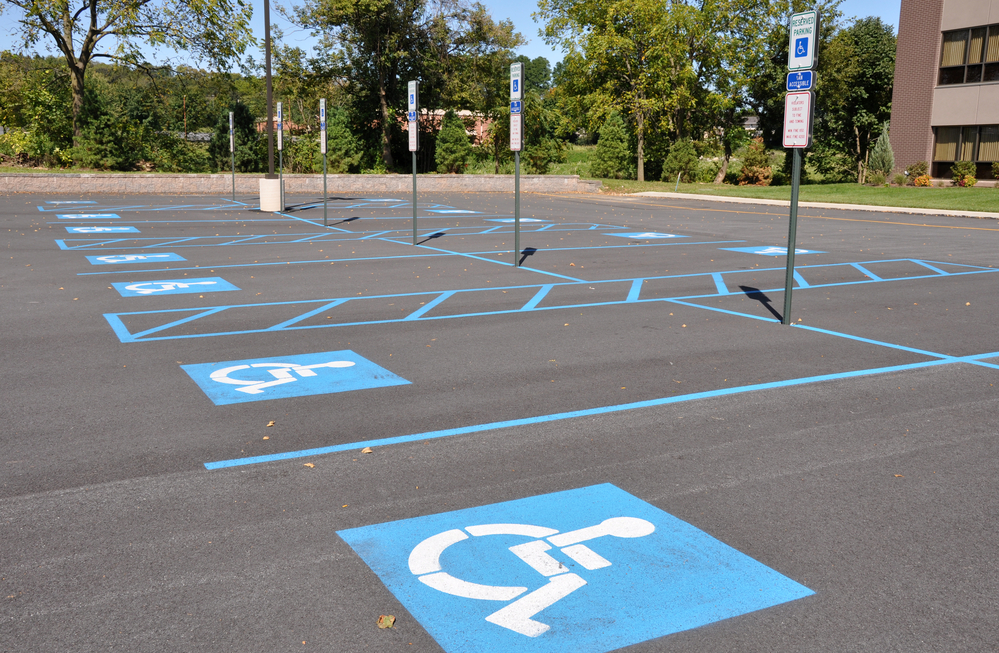The ADA Ramp Guidelines for Parking Lot Access

All you need to know regarding Florida’s ADA ramp standards. Ramps must be utilized under the Americans with Disabilities Act (ADA) to make public areas accessible to those using walkers, wheelchairs, and motorized scooters. Every guest and client you have on your property should be accommodated since those with impairments are more likely to fall or trip. This covers your parking lot as well.
Under federal law, one could see a lack of ADA ramps in parking lots as an act of discrimination against those with disabilities. Handicap ramps so have to be constructed in line with ADA ramp guidelines. See further to find out whether your parking lot meets Florida’s ADA ramp guidelines.
Is your parking lot ADA ramp compliant?
The ADA lays a set of guidelines for parking lots to make public areas accessible to wheelchair users, strollers, or walkers. One of these criteria is having a ramp compliant with the ADA.
- Rising Incidents in Parking Lot
Parking lots include a variety of hazards that you should be aware of, particularly given the everyday movement of several automobiles and people across the space. Mobile devices, kids, and advertising meant especially to grab your attention are other distractions. Those with handicaps run more danger of injury without ADA-approved handicap ramps.
- ADA-Compliant
Being ADA-compliant means more than just painting your pavement with the global sign of accessibility in spray-painters. Based on Department of Justice-approved changes to Titles II and III of the Americans with Disabilities Act, the 2010 ADA guidelines for accessible design draw on
The ADA covers a spectrum of fundamental guidelines and regulations for handicap accessibility in parking lots and other like-minded facilities. You have to familiarise yourself with the act to avoid financial or legal responsibility since non-compliant buildings and installations can be punished or sued.
Does your parking lot comply with ADA ramps?
One of the infrastructures needed to increase building accessibility for handicapped persons has been underlined as ADA parking lot ramps. You should find out whether the regulations of your parking lot follow.
Apartment buildings, commercial buildings, and other facilities are required to provide a wheelchair ramp or handicap ramp meeting ADA minimum requirements. These ADA ramp rules provide safe access for those pushing strollers as well as for those in wheelchairs or walkers.
Main ADA ramp criteria include ramp length and slope, site and landing size, and railing design. Apart from the current ADA ramp regulations, the local building code could include extra or different criteria that have to be complied with in the specific region.
The ADA ramp requirements cover public facilities and commercial buildings with accessible paths with a height difference of more than twelve inches and a slope steeper than five percent.
ADA Lot Ramp Guidelines
Constructing parking lot ramps with four key considerations in mind can help to attain ADA compliance in terms of dimensions, handrails, landings, and edge protection. To be totally compliant with the laws and regulations for handicap-accessible parking, you also have to take into account and note the proper stall sizes, slot placements, and marks.
Wheelchair ramps and other building components must be accessible and safe for persons with disabilities, so the ADA lays guidelines on their form, slope, size, and design.
Pitch
The ADA rules call for twelve inches of length for every inch of elevation since the slope in the direction of movement cannot be more than 1:12.
Running opposite the user’s travel path, the cross slope cannot be more than 1:48. The surface of the ramp may need more anti-slip texture depending on the slope and the building material to stop sliding.
Widening
The ADA ramp rules dictate that, whether your wheelchair ramp is portable or permanent, a width of at least 36 inches separates the handrails of the ramp. This area has to be always free of clutter and obstacles. Remember that some states have criteria more strict than the ADA.
Specifications for Landing
Every wheelchair ramp should provide a sufficient level landing at both the top and bottom of the ramp. The landings have to be at least as wide as the ramp, flat, and at least 60 inches long.
Conclusion
Appropriate parking lot care is crucial to prevent water damage on already-existing parking lots. Among this upkeep could be parking lot repairs and striping. Sealcoating protects your parking lot against liquids including water and vehicle fluids, so maintains its appearance and structural integrity.





